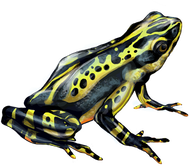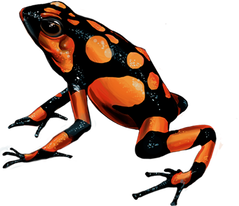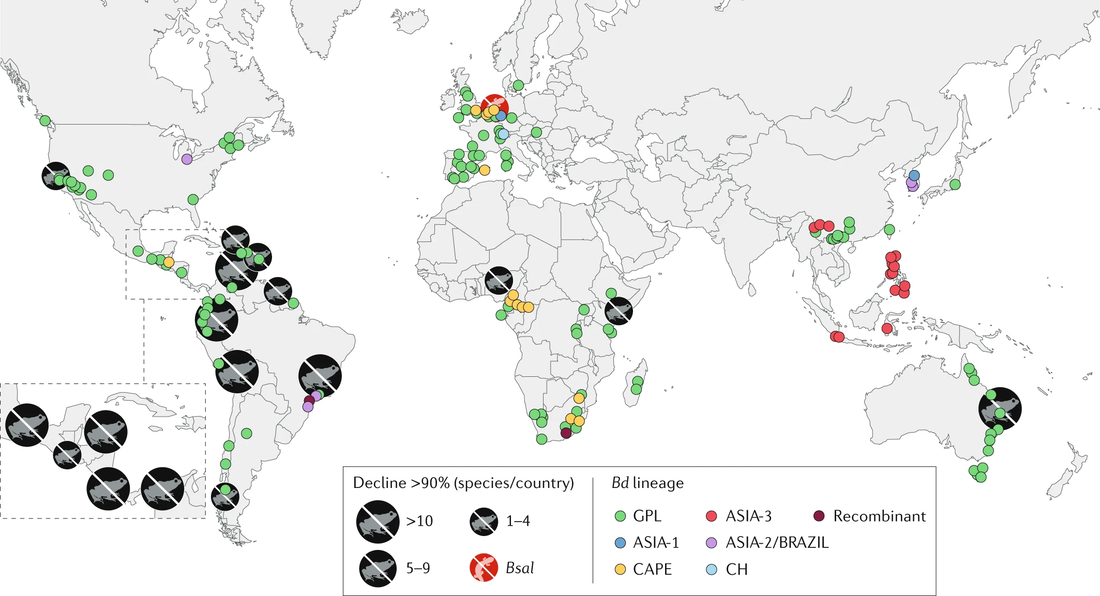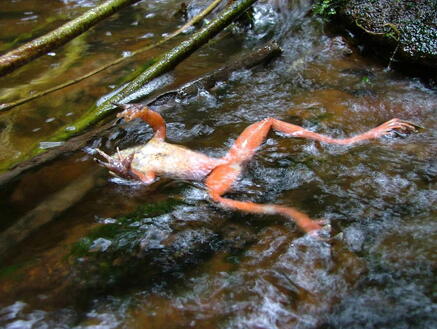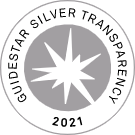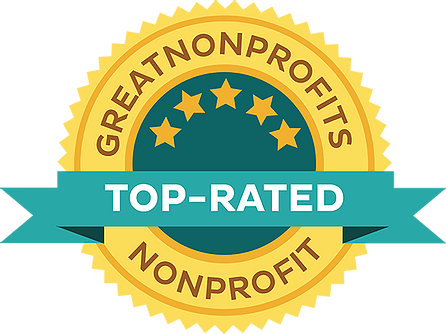What Is chytrid?
Chytridiomycosis, often referred to as just Chytrid, is an infectious disease caused by the waterborne fungus Batrachochytrium dendrobatidis (Bd) in frogs and Batrachochytrium salamandrivorans (B-Sal) in salamanders. The effects of this outbreak have led to the greatest biodiversity decline due to a pathogen in history.
How bad is it?Chytrid has caused a significant population decline in over 500 frog species, 124 of which have seen declines greater than 90%, and has led to the presumed extinction of over 90 species making it the single most biodiversity destructive pathogen known to science. No other documented pathogen has eliminated as many species in such a short stretch of time.
|
Where is Chytrid?
MAP SOURCE: Fisher & Garner 2020
As you can see from this map, the answer is almost everywhere. First discovered in Australia in 1993, Chytrid is now on every continent except Antartica, with the greatest impact in South and Central America, North America, and Australia. It has the lowest impact in Asia, where it is thought to have originated from.
What does it look like?Frogs affected will appear withered and lethargic, with an opaque or off white coloration. They can also have reddened skin, dislocation around the mouth, and an inability to right themselves when flipped over.
What do I do if I suspect I see an effected frog?Immediately alert the local property owners and if possible local biologists of the situation. You can also email info@herpconservation.com for more assistance.
|
How do we stop the spread?Disinfecting articles of clothing like shoes, hiking sticks, and anything else that touches the ground, can help ensure we lessen the chances of spreading the fungus responsible for Chytrid. Also remembering not to touch frogs unless entirely necessary, and if necessary using disposable gloves between frogs. Touching an infected frog, can also be a vector for spreading this illness.
|
How do you disinfect?
All applicable gear, including shoes or any other boject that can make contact with the ground can and should be disinfected using any of the following commonly available cleaning products:
Option 1: 4% concentration of household bleach (chlorine bleach) - leave on object(s) for 5 minutes.
Option 2: 1% concentration of Lysol (benzalkonium chloride) - leave on object(s) for 5 minutes.
Option 3: 70% concentration of rubbing alcohol (isopropyl alcohol) - allow to dry on object(s).
Option 4: 1:20 dillution of Detol Medical (Chloroxylenol 4.8%) - leave on object(s) for 5 minutes.
Option 1: 4% concentration of household bleach (chlorine bleach) - leave on object(s) for 5 minutes.
Option 2: 1% concentration of Lysol (benzalkonium chloride) - leave on object(s) for 5 minutes.
Option 3: 70% concentration of rubbing alcohol (isopropyl alcohol) - allow to dry on object(s).
Option 4: 1:20 dillution of Detol Medical (Chloroxylenol 4.8%) - leave on object(s) for 5 minutes.
Sources
“Chytridiomycosis,” Cornell Wildlife Health Lab, 21-Mar-2018. [Online]. Available: https://cwhl.vet.cornell.edu/disease/chytridiomycosis#collapse3. [Accessed: 27-Mar-2021]
Fisher, M.C., Garner, T.W.J. Chytrid fungi and global amphibian declines. Nat Rev Microbiol 18, 332–343 (2020). https://doi.org/10.1038/s41579-020-0335-x
JOHNSON, M., BERGER, L., PHILIPS, L., & SPEARE, R. (2003). FUNGICIDAL EFFECTS OF CHEMICAL DISINFECTANTS, UV LIGHT, DESICCATION AND HEAT ON THE AMPHIBIAN CHYTRID BATRACHOCHYTRIUM DENDROBATIDIS. DISEASES OF AQUATIC ORGANISMS, 57, 255–260. DOI:10.3354/DAO057255
Scheele, B. C., Pasmans, F., Skerratt, L. F., Berger, L., Martel, A., Beukema, W., … Canessa, S. (2019, March 29). Amphibian fungal panzootic causes catastrophic and ongoing loss of biodiversity. Science. https://science.sciencemag.org/content/363/6434/1459.
Stuart S. N.; Chanson J. S.; et al. (2004). "Status and trends of amphibian declines and extinctions worldwide". Science. 306 (5702): 1783–1786. doi:10.1126/science.1103538.
Van Rooij, Pascale et al. “Efficacy of chemical disinfectants for the containment of the salamander chytrid fungus Batrachochytrium salamandrivorans.” PloS one vol. 12,10 e0186269. 12 Oct. 2017, doi:10.1371/journal.pone.0186269
SUPPORT THE CAUSE
|
The CARE Project is a donor supported grass roots initiative. HCI is a registered charitable 501(c)3 organization and as such donations are tax deductible, please see your accountant or tax advisor for details.
|

